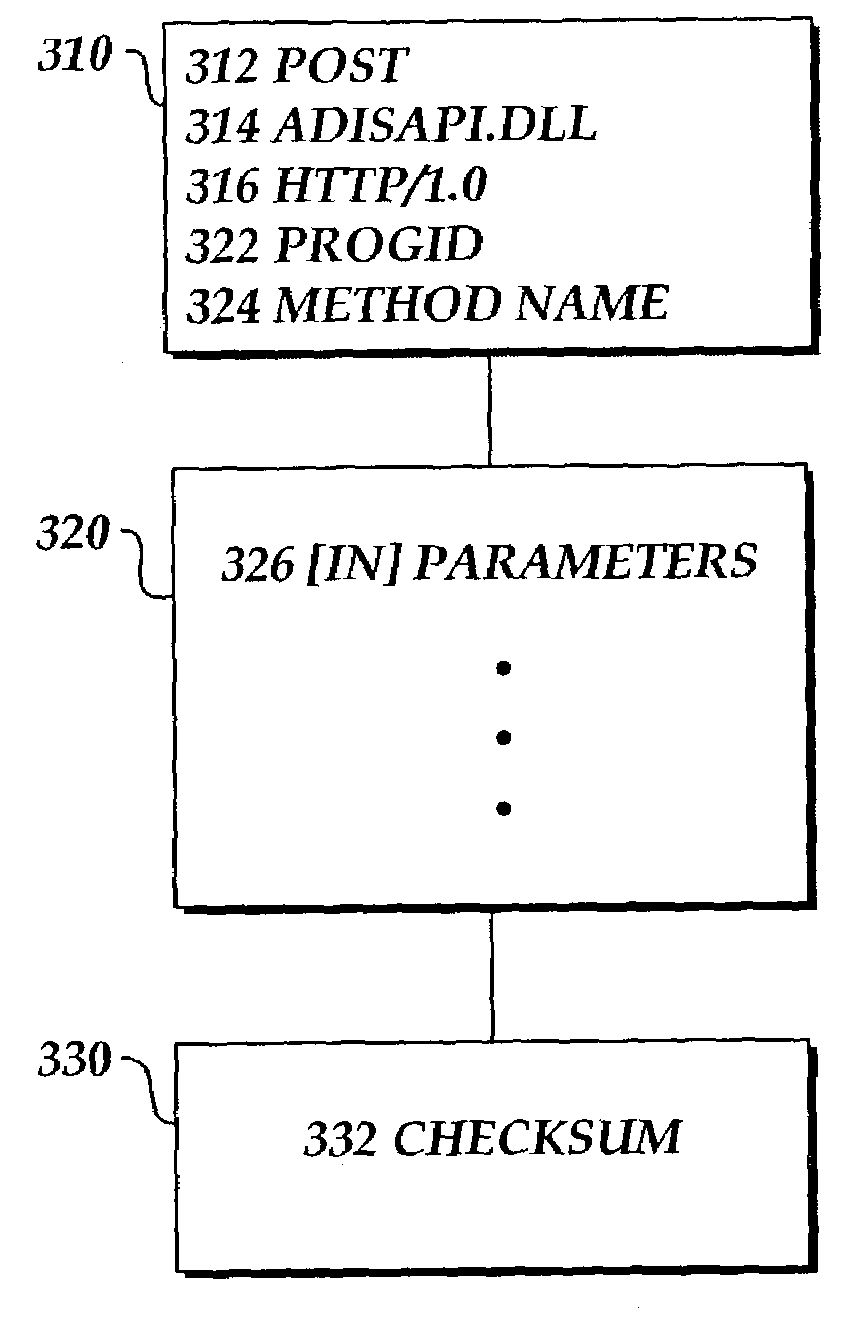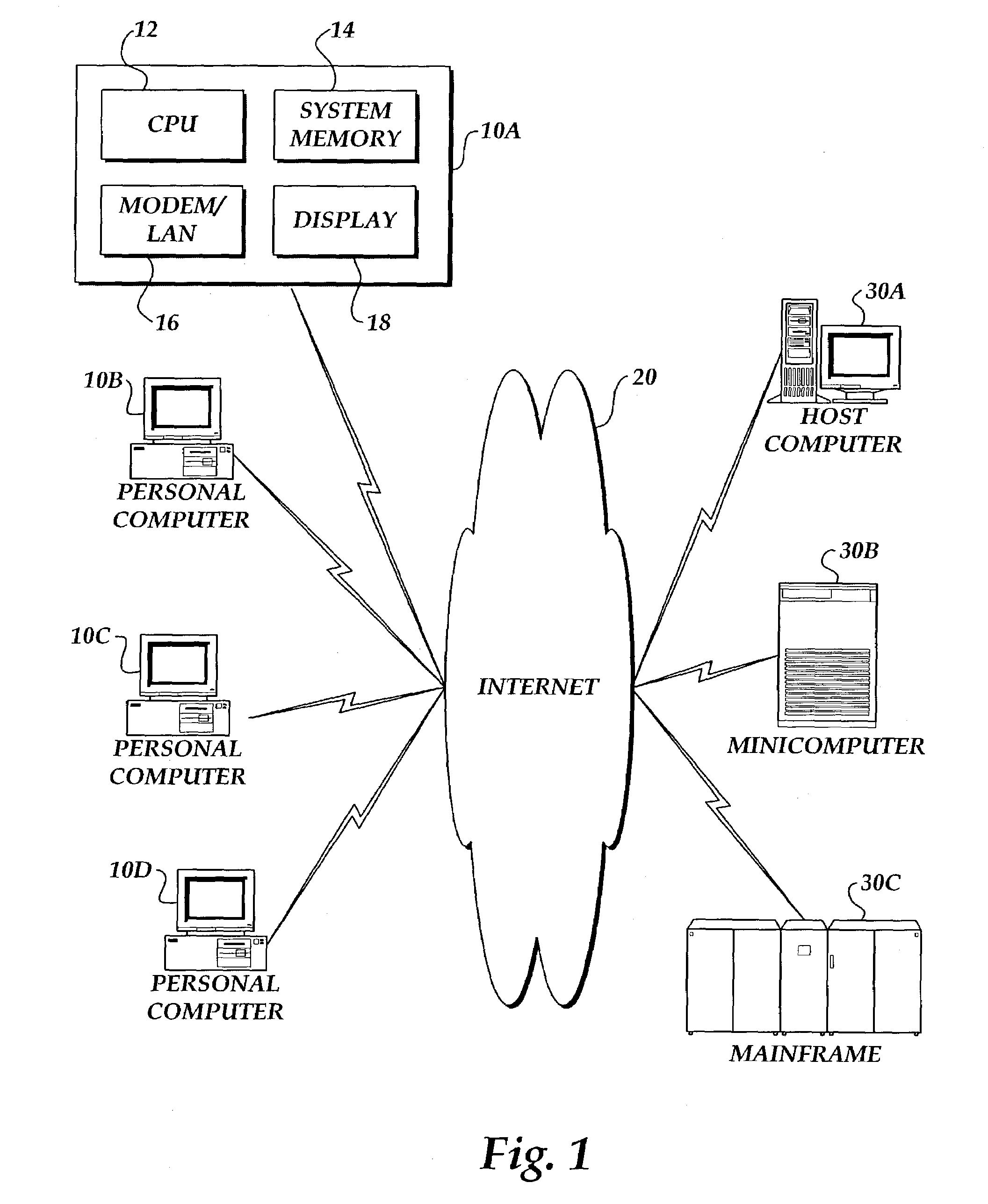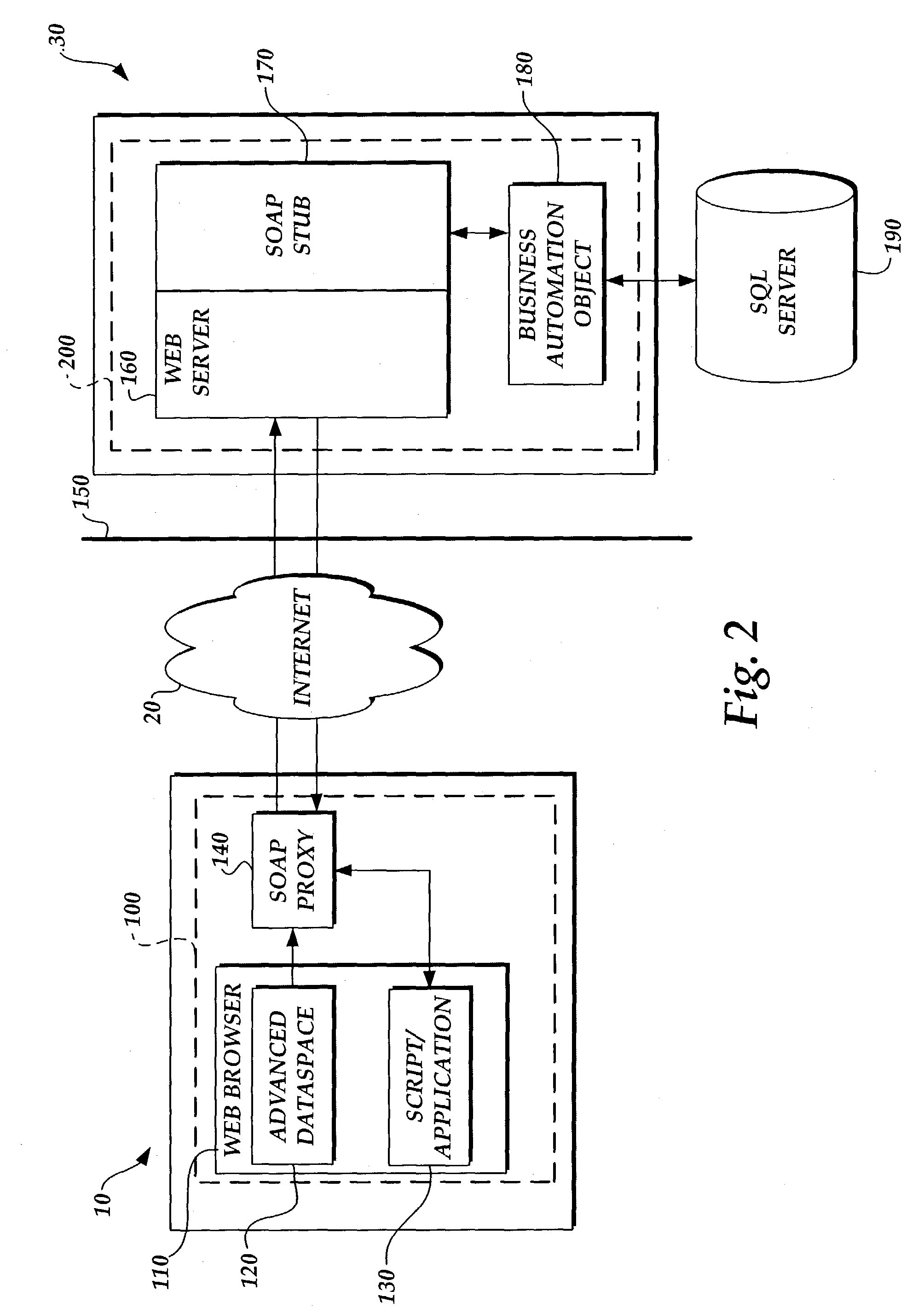Simple object access protocol
a simple and object-based technology, applied in the field of internet interactivity, can solve the problems of monolithic applications, component software paradigms suffer a similar problem to monolithic applications, and are difficult to upgrade, so as to achieve richer and more interactive conten
- Summary
- Abstract
- Description
- Claims
- Application Information
AI Technical Summary
Benefits of technology
Problems solved by technology
Method used
Image
Examples
Embodiment Construction
[0024]As will be better understood from the following description, with reference to FIG. 1, the present invention is directed to a system for allowing a client process on a local client computer 10a, 10b, 10c, 10d, . . . to access and invoke Automation objects located on remote ISAPI-enabled Web servers 30a, 30b, 30c, . . . through a computer network such as the Internet 20.
[0025]The remote servers 30 may take the form of a host computer 30a, a minicomputer 30b, a mainframe computer 30c, or any other configuration of computer. A typical client computer 10a for implementing the invention is a general purpose computing device such as a conventional personal computer, which comprises such well-known items as a central processing unit 12, system memory 14, a modem and / or network card 16 for connecting the local computer to the Internet 20, a display 18, and other components not specifically shown in FIG. 1, such as a keyboard, mouse, etc. While the remote servers 30 will typically be u...
PUM
 Login to View More
Login to View More Abstract
Description
Claims
Application Information
 Login to View More
Login to View More - R&D
- Intellectual Property
- Life Sciences
- Materials
- Tech Scout
- Unparalleled Data Quality
- Higher Quality Content
- 60% Fewer Hallucinations
Browse by: Latest US Patents, China's latest patents, Technical Efficacy Thesaurus, Application Domain, Technology Topic, Popular Technical Reports.
© 2025 PatSnap. All rights reserved.Legal|Privacy policy|Modern Slavery Act Transparency Statement|Sitemap|About US| Contact US: help@patsnap.com



